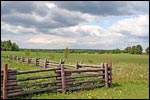
A bang-up reporting job by Ray Ring in the most recent issue of High Country News on a menacing set of property-rights initiatives that will be on the ballot in six states this November: Arizona, California, Idaho, Montana, Nevada, and Washington. If you thought Oregon’s Measure 37 was bad, you ain’t seen nothin’ yet.
The initiatives have titles like “Protect Our Homes,” “The Home Owners Protection Effort” and “People’s Initiative to Stop the Taking of Our Land” — as if the government is about to come in with bulldozers to sweep everyone off their property. But here’s how the initiatives would work: If you could fit 20 houses on your land, plus a junkyard, a gravel mine, and a lemonade stand, and the government limits you to six houses and lemonade, then the government would have to pay you whatever profit you would have made on the unbuilt 14 houses, junkyard and mine. Generally, if the government can’t or won’t pay you, then it would have to drop the regulations.
…
The initiatives on state ballots this year vary in their specifics, but like Measure 37, they have no language explaining where governments would get money to pay property owners for the impacts of regulations. They are intended not to make regulations workable, but to prevent them entirely.
They would all be more sweeping than Measure 37 in this sense: The new initiatives would apply to all landowners facing new regulations passed by state and local governments. The one in Washington would be retroactive, covering regulations passed since 1995.
…
If you live in any of the six states targeted this year and someday you might want a new regulation to put conditions on a Super Wal-Mart, or to protect streambanks from new construction, or to require developers to do anything for open space and affordable housing, you would be wise to vote “no” in November.
Scariest of all:
In Oregon, a huge coalition opposed Measure 37, including environmentalists, governments, planners, architects, nurses, labor, neighborhood associations, the Oregon PTA and the American Cancer Society. They won endorsements from every daily newspaper in the state. They spent twice as much money as the property-rights side. And they still lost. Now, in many of the other states, the opposition is disorganized and poorly funded.
Backers of the initiatives are preying on people’s anger over the Supreme Court’s eminent domain ruling last year, in which the “high court held that the city of New London, Conn., could exercise eminent domain to condemn the homes of Susette Kelo and six other holdouts, to make room for a global pharmaceutical company’s 100-acre manufacturing complex.”
But even the staunchest foot soldiers pushing this year’s initiatives don’t seem to understand that they go way beyond anything resembling eminent domain. “The property-rights advocates have exploited Kelo to advance a broader anti-government agenda,” said John Echeverria, head of the Environmental Law and Policy Institute at Georgetown University in Washington, D.C.
Really, you should read this article.


